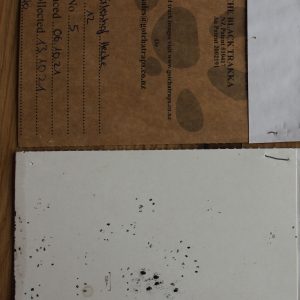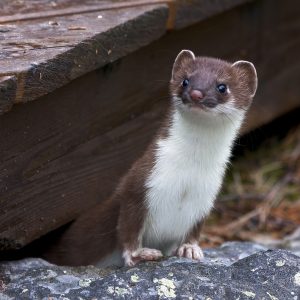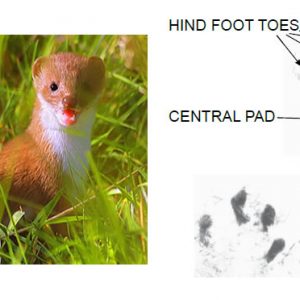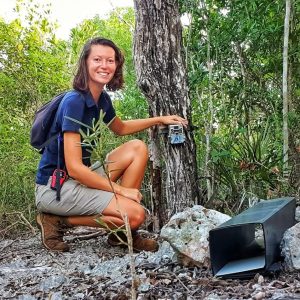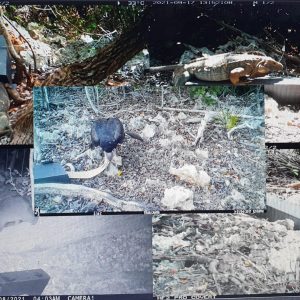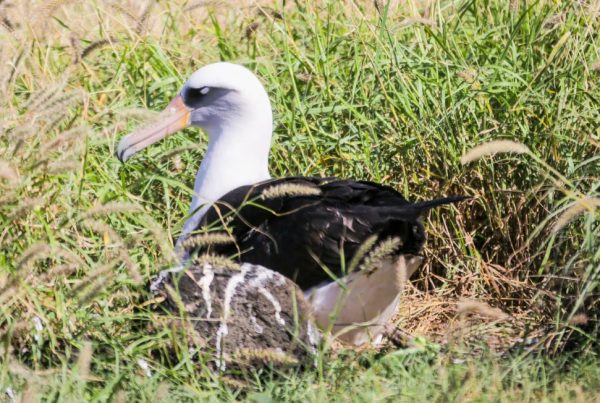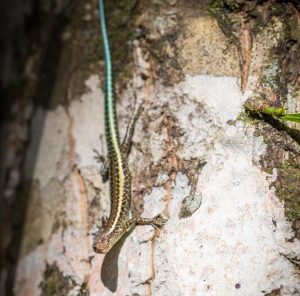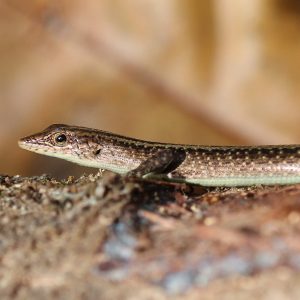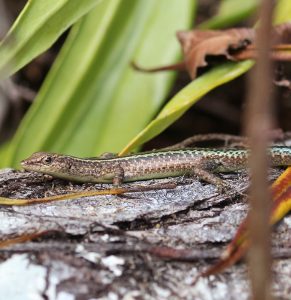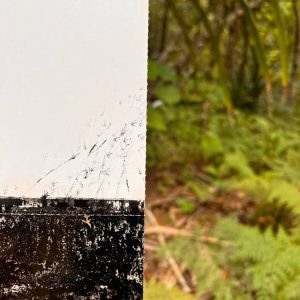Who uses Black Trakka monitoring tunnels?
Protecting Stoats & Weasels in Switzerland
Solidago Conservation, Switzerland
We finished the first round of the stoat monitoring in the region of Basel, Switzerland and we are very pleased with the results. During this six-week period we had 4 times traces of Mustela putorius, 3 times of Mustela nivalis, 1 trace of Mustela erminea and 1 trace, which was impossible to distinguish if it was M. nivalis or M. erminea.
Kathrin Eichenberger
Solidago Conservation Ermine Project
- Mustela erminea foot print
- Mustela nivalis foot print
- Weasel
Pacific Rim Conservation
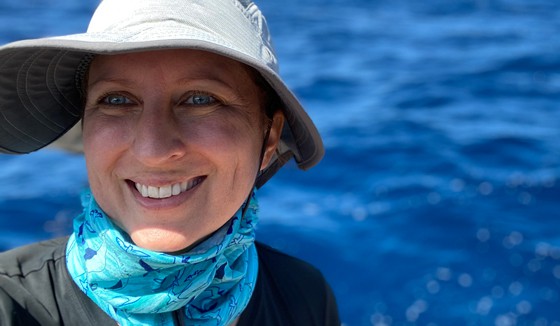
Dr Lindsay Young
Location: Hawaii, USA
We all use the tunnels on our projects!
Dr. Lindsay Young is the Executive Director of Pacific Rim Conservation, an organisation that seeks to ensure the future of bird diversity, populations and ecosystems in the Hawaiian Islands and the Pacific Region. Founded in 2006, PRC has a “boots on the ground” approach to conservation that not only restored and protected existing habitats but also brought back bird species that were no longer found in Hawaii via translocation and social attraction.
Website: pacificrimconservation.org
International Iguana Foundation
Location: Jamaica
Our first paper using them should be out shortly in Caribbean Journal of Science. They have been useful in not only documenting the mongoose and rodent activity within and outside the core iguana protected area, but also in assessing other small lizards throughout to better understand if our control efforts are working to reduce IAS and how that is impacting other small lizards and hutia in addition to the iguanas.
We will now be using them for the same things to evaluate the inclusion of a buffer zone around our core protected iguana habitat. Basically they will be used in conjunction with camera traps to assess the hopeful reduction of IAS within the core area once the buffer zone IAS control traps are opened up.
Stesha Pasachnik, PhD
Co-chair IUCN Iguana Specialist Group
International Iguana Foundation Program Manager
Website: iguanafoundation.org
- Photos courtesy of Project Head, Melindy Dirks
- Feral Cat
- Iguanas (top), Black Vulture (centre), Hutia or Jamaican Coney (bottom left), Mongoose (bottom right)
- Mongoose at night
- Mongoose prints
US Department of Agriculture
Location: U.S. Virgin Islands
Glad we got them for the monitoring program. We will primarily be using these to detect mice, rats, mongoose, and other small mammals from offshore islands we have eradicated or need to in the future. We deployed and they worked great.
Alan Shane McKinley
Caribbean District Supervisor / Supervisory Wildlife Biologist
APHIS US Department of Agriculture Wildlife Services AL/PR/VI
North Shore Community Land Trust
Location: Hawaii, USA
Mongoose are a major problem in Hawaii. They have no predators on the island so their population is only limited by food availability and unfortunately there isnʻt much they will not eat. They have been a major problem for our native bird population. Our project focuses on Laysan Albatross (which the eggs and chicks are easy prey). The mongooses found in Hawaii (Herpestes Javanicus) are native to India and were originally introduced to Hawaii Island in 1883 by the sugar industry to control rats in sugarcane fields on Maui Molokai and Oahu. The introduction of mongoose to Hawaii with the intent to control rats was misguided, because while rodents make up a large portion of the mongoosesʻ diet, their substantial negative impact on other desirable birds, insects, and animals outweighs their minor impact on rats. Mongoose are now widespread on all the main Hawaiian islands except for Lanai and Kauai.
We use your Black Trakka cards to do quarterly monitoring to see the impacts of our trapping. We have had good results with low mongoose track rates on the tracking cards in the area within our trap grid.
Tim Tybuszewski
Director of Conservation
North Shore Community Land Trust
World Wide Fund for Nature
 Location: Switzerland
Location: Switzerland
In our area agriculture was intensified during the last decades, landscape structures disappeared more and more. This contributed to the decimation of stoats and weasels and today they are found very rarely.
Our project aims to implement landscape structures, such as hedges, woodpiles or stone walls in order to increase the number of stoats and weasels again. Those structures are at the same time promoting many other endangered animal species, such as birds or reptiles. The project lasts 5 years. The distribution of stoats and weasels is monitored on a yearly basis. This enables to verify, if the measures taken contributed to increase the presence of stoats and weasels.
For the monitoring we use the Black Trakka Cards, which are easy to handle in the field. We combine them with solid wooden tunnels which are placed in ecological structures.”
Petra Meyer
WWF Zentralschweiz
Christmas Island National Park
 Location: Christmas Island
Location: Christmas Island
The Threatened Species Program run by Parks Australia, use Black Trakka pre-inked monitoring cards in their reintroduction program of two species of Critically Endangered reptiles endemic to Christmas Island. On Christmas Island, there are two soft-release sites in rehabilitated forest that is surrounded by predator exclusion fencing, where they have released populations of captive-bred blue-tailed skinks (Cryptoblepharus egeriae) and Lister’s geckos (Lepidodactylus listeri). Ink cards are used to monitor the sites for incursions of predators such as introduced black rats, and to collect information about what habitat the reptiles are utilising so they can learn more about their behaviour and ecology, as both species went extinct in the wild in 2012 and only persisted in captivity until they were released into these sites in 2018.
Black Trakka pre-inked monitoring cards are also used on the Cocos (Keeling) Islands, where they released blue-tailed skinks onto two small islands (Pulu Blan and Pulu Blan Madar) as another measure to prevent the species from facing extinction. The program works with the Rangers from Pulu Keeling National Park to monitor the skinks’ dispersal across the island and identify what habitat they are utilising, which helps to find them when undertaking population surveys. The ink cards are put high up on branches in trees, as well as on the ground or on logs and fallen branches, and they are covered with PVC hoods to protect the ink from the tropical rains so they only need to replace the ink cards monthly.
The photos in this case study are of the blue-tailed skinks in the release sites, tracking cards with blue-tailed skink footprints, and a few with Thrush (bird) footprints which are the skinks’ natural/native predator and also a threatened species.

